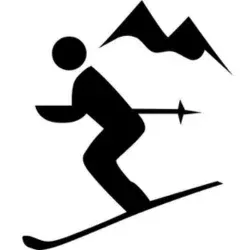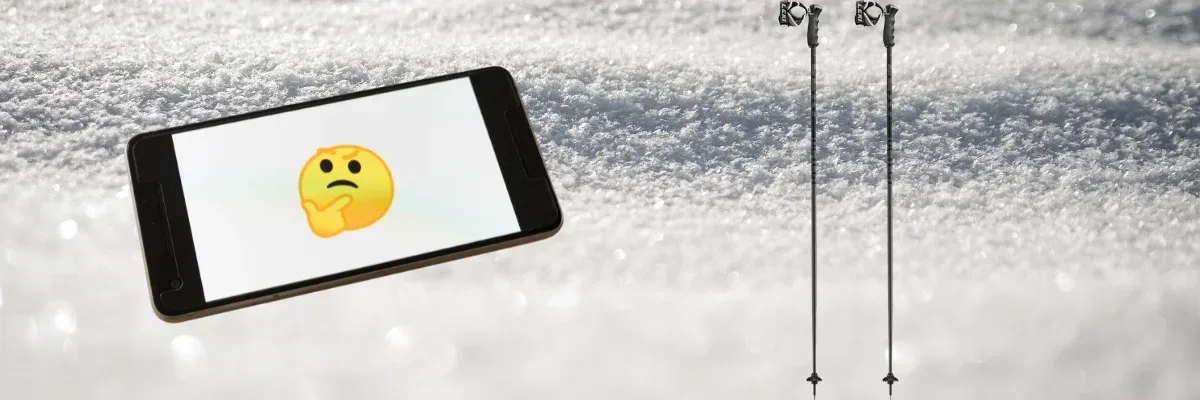Key Takeaways:
- Understanding the right ski pole length is crucial for better balance and control.
- Ski pole sizing can be determined by your height, skiing style, and the terrain you'll be tackling.
- Adjustable ski poles offer versatility for skiers who enjoy both backcountry and downhill skiing.

Skiing is a thrilling sport that combines speed, agility, and the breathtaking beauty of snow-covered landscapes. Whether you're carving down groomed slopes or exploring the backcountry, having the right gear is essential for a safe and enjoyable experience. One piece of equipment that often gets overlooked is the ski pole. The right size ski poles can make a significant difference in your skiing performance and comfort. But with so many options available, you might find yourself asking, "What size ski poles do I need?" Let's dive into the details to help you find the perfect fit.
The Importance of the Right Ski Pole Length
The right ski pole length is vital for maintaining proper posture and balance while skiing. Ski poles help skiers with timing and rhythm during turns, provide support for planting turns, and can aid in pushing off on flat terrain. Using poles that are too long or too short can lead to discomfort and may even increase the risk of falls and injuries.
Measuring for the Perfect Pole Length
To determine the correct length ski poles for your needs, start by turning the ski pole upside down and grab it just below the basket. With your elbow bent at a 90-degree angle, the top of the pole should just touch the ground. If the pole is too long or too short, your arm will be at an incorrect angle, which can throw off your balance and technique.
Considering Your Skiing Style and Terrain
Your skiing style and the terrain you prefer also play a role in choosing the right size poles. Aggressive skiers and those who prefer off-piste or fresh powder may benefit from longer poles, while those who stick to groomed slopes might find shorter poles more manageable. Additionally, if you enjoy both backcountry skiing and downhill skiing, adjustable ski poles can offer the versatility you need.
The Role of Ski Boots and Leg Length
When sizing your ski poles, it's important to wear your ski boots or at least account for their height. Your leg length, including the added height from your ski boots, will influence the correct length of your ski poles. Many poles come with a size chart that takes your overall height into consideration, but remember to factor in the height of your ski boots as well.
Adjustable Poles: A Versatile Option
Adjustable ski poles, or telescopic poles, are a great choice for skiers who enjoy a variety of terrains. These poles can be lengthened for deep snow and shortened for groomed runs, providing a custom fit for any situation. They're also ideal for skiers whose arm length and upper body height don't match standard pole sizes.
Adjusting to Your Skiing Technique
When considering ski pole size, it's crucial to factor in your personal skiing technique. For those who prefer a more aggressive, forward-leaning stance, a slightly longer pole can help maintain balance and provide the necessary support. This is particularly true for alpine ski pole users who tackle steep slopes where the extra length aids in planting the pole firmly into the snow. However, it's important to avoid poles that are too long, as they can disrupt your posture and make turning more difficult.
Conversely, if your style is more upright or you're into cross country skiing, a shorter pole might be more beneficial. Short poles can enhance maneuverability and reduce the effort needed to lift and plant the pole with each stride. This is especially relevant when skiing off piste, where the terrain can be unpredictable. The right length in this scenario allows for quicker adjustments and better control, ensuring that the poles are an extension of your arms rather than a hindrance.
The Significance of Ski Pole Weight
When selecting ski poles, the weight of the poles is as crucial as their length. Poles that are too heavy can lead to arm fatigue, which might affect your performance on the slopes. On the other hand, poles that are too light might not provide the stability you need in certain conditions. Ideally, your ski poles should feel like a natural extension of your arms. They should be light enough to maneuver easily, yet have enough heft to aid in your skiing rhythm. For most skiers, poles that are the same height as their arm's reach when bent at a 90-degree angle offer the best balance between weight and usability.
Moreover, the weight of the ski pole can also impact your control during turns and when planting the pole in the snow. Heavier poles might sink more easily into deep snow, which can be beneficial in powder conditions. However, in groomed or icy conditions, lighter poles that allow for quick, sharp movements are often preferred. It's important to consider the inches of difference in pole weight, as even a few ounces can alter your skiing experience. Test different poles to find the weight that complements your skiing style and the terrain you frequent most.
Customizing Ski Poles for Performance
Customizing your ski poles can enhance your skiing experience significantly. One way to customize is by adjusting the length of your poles to match your height and skiing posture. If you're unsure about the correct length, a good rule of thumb is to flip the ski pole upside down and grab it directly under the basket. If your elbow forms a 90-degree angle, the pole is the right size for someone of the same height. This method ensures that the pole is neither too long nor too short, providing optimal balance and support.
Another aspect of customization is the choice of pole tips. Different tips can perform better on various types of snow and terrain. For instance, sharper, narrower tips are ideal for icy conditions as they can pierce the surface more effectively. In contrast, wider tips are better suited for softer snow where they can provide greater support. Additionally, consider the inches of grip padding on your poles. Adequate padding can reduce hand fatigue and improve grip strength, which is particularly beneficial for longer ski sessions. By customizing these elements, you can tailor your ski poles to your specific needs and enhance your overall skiing technique.
The Impact of Pole Features on Performance
When buying ski poles, it's not just the length that matters; the features of the pole can significantly impact your performance on the slopes. The grip of the pole, for instance, should be comfortable and match the size of your hand for optimal control. Most ski poles come with ergonomically designed grips that provide a secure hold even with gloves on. Additionally, the strap should be adjustable to ensure it snugly fits around your wrist, offering support without restricting movement.
The tip and shaft of the pole are equally important. The tip needs to be sharp and durable to penetrate hard snow, while the shaft should be sturdy yet lightweight. Poles with a slight bend near the grip can help skiers maintain a more natural arm position, reducing fatigue. Whether you're using long poles for deep snow or short poles for groomed trails, these features can make a significant difference in your skiing experience. Remember, the best ski pole is the one that feels like an extension of your body, enhancing your connection to the skis and the snow beneath you.
The Benefits of Different Materials
Ski poles are made from different materials, each with its own set of benefits. Aluminum poles are durable and affordable, while carbon fiber poles are lightweight and offer better balance. Carbon fiber poles are particularly popular among racers and advanced skiers for their strength and responsiveness.
Ski Pole Straps and Grips
The straps and grips of a ski pole are not just about comfort; they also affect your control and safety. Ski pole straps should be snug but not restrictive, allowing you to quickly release the pole in case of a fall. The grips should fit comfortably in your hands, providing a secure hold without causing fatigue.
Choosing Poles for Specialized Skiing
For those who specialize in certain types of skiing, such as racing or park skiing, specialized poles are available. Racing poles, for example, are designed to minimize air resistance, while poles for park skiing might have specific features for performing tricks and stunts.
The Debate Over Pole Baskets
Pole baskets come in various sizes and are designed for different snow conditions. Powder baskets are larger to prevent sinking in deep snow, while smaller baskets are sufficient for packed slopes. Many skiers have a personal preference for the type of basket they use, but it's worth considering the typical snow conditions you'll encounter.
When to Replace Your Ski Poles
Ski poles can last many seasons, but they should be replaced if they show signs of significant wear or damage. Bent shafts, cracked grips, or worn straps can compromise the safety and effectiveness of your poles. Regularly inspect your poles and replace them as needed to ensure they continue to serve you well on the slopes.
Summary
Choosing the right size ski poles is a critical aspect of your ski gear that can enhance your performance and enjoyment on the slopes. By considering factors such as your height, skiing style, and preferred terrain, you can determine the perfect pole length for your needs. Whether you opt for adjustable poles, carbon fiber, or specialized racing poles, the right size will help you maintain better balance and control as you navigate the snow.

FAQs
How do I know if my ski poles are the correct size?
To check if your ski poles are the correct size, turn the ski pole upside down and grab it below the basket. Your arm should be at a 90-degree angle when the top of the pole is touching the ground. If your arm is not at a right angle, you may need a different size.
Can I use the same ski poles for different types of skiing?
While you can use the same ski poles for different types of skiing, adjustable poles are recommended for those who frequently switch between terrains, as they can be easily lengthened or shortened to suit various conditions.
Should I consider my height with or without ski boots when choosing ski pole length?
You should consider your height with ski boots on when choosing ski pole length. The added height from your boots will affect the correct length of your ski poles, so it's important to either wear your boots or account for their height when sizing your poles.









